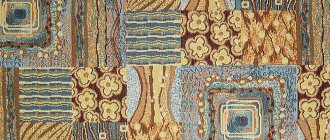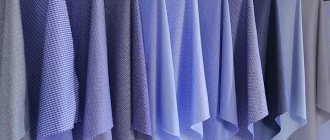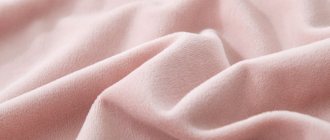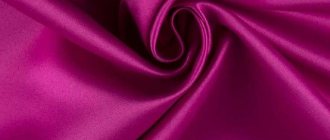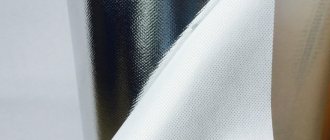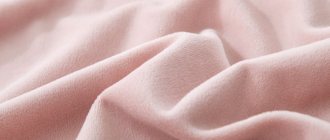What type of fabric is this?
Molton is a dense, soft matte fabric with double-sided brushing and double-face weave of threads.
The fabric is made from natural raw materials of animal or plant origin, therefore a distinction is made between wool and cotton fabrics.
Molton colors
Molton is produced everywhere, but some European countries, such as Poland and Austria, can be called leaders.
Catalog of fabrics made from natural fibers
What kind of fabric
Molton fabric began to be produced in the 17th century. The material with a four-century history has not undergone fundamental changes. It is still made from natural fibers.
The description of molton fabric allows you to better understand what it is: the material is a dense, soft fabric with double-sided pile. It has a textured pattern (ribbed) and a matte surface.
Reviews about molton fabric are mostly positive. Clothes made from it are pleasant to wear, and clothes made from it are comfortable. According to buyers, it is ideal for autumn or spring. The material is not difficult to work with and there are no difficulties with cutting.
Origin story
The history of the material began in the 17th century. There is still a debate about the origin of molton. According to one version, this is a derivative of the French word “mollet”, which describes the soft texture of molton. According to another, the name is consonant with the English city of Melton, which is why it is considered the birthplace of the canvas.
Initially, moulton consisted mainly of wool. It was spun from worsted or melange yarn using the twill method. The material itself was expensive, so not all segments of the population could afford to purchase it.
History and method of production
Not everyone is familiar with molton fabric, what it is and how it is made. There is no consensus on the origin of this name. According to the most common version, it is based on the French word “mollet”, that is, “soft”. According to another, the name is associated with the English city of Melton, a wool processing center where the famous Melton castor cloth was made.
Initially, only woolen fabric woven from combed yarn using the twill weave method was called moulton.
Its peculiarity was diagonal ribs and low fluffy pile on the front side.
This warm material was highly valued and was mainly used to make outerwear, especially for women and children. It was most fashionable in the 18th century and can often be seen in portraits of that period depicting Russian nobility. Later, these textiles began to be made from cotton, often with a regular plain weave, but still with a warm, thick pile. As a rule, moulton was made from light-colored yarn, but sometimes it was also based on melange threads. This fabric was used for warm clothes and linen; later they began to make elegant and cozy blankets and bedspreads from it.
Fabric composition and its properties
In addition to cotton and wool bases, polyester and elastane are added to modern fabrics to improve their properties. Molton is characterized by double-sided brushing, and the rep pattern of weaving forms a relief pattern.
Elastane
Artificial elastane fabric: from production and properties to areas of use
more details
Polyester
Popular synthetic fabric polyester: what is known about its characteristics and areas of application?
more details
The most valuable properties are the naturalness and softness of the material. Products made from moulton are flexible, durable and at the same time comfortable to wear. The material holds heat well and does not lose its shape.
Composition and properties
Molton fabric is made mainly from natural fibers: wool or cotton. Some manufacturers include polyester (no more than 10%) or elastane (no more than 5%) in moltons. This increases the elasticity and strength of the material.
The density of the fabric depends on the raw material. It varies from 160 to 300 g/m2. The density of wool molton is 280 g/m2, cotton – 170 g/m2.
Woolen fabrics are woven with a twill weave and have a characteristic rib on their surface. Cotton can also be made into linen. Regardless of the composition, fleece has a double-sided fleece. Soft bristles retain heat and protect from wind.
Characteristics such as elasticity and pliability provide molton with low creasing. Clothing made from it is comfortable to wear: it does not restrict movement, keeps you warm in cool weather, and does not cause excessive sweating.
Types of fabric
Types of molton:
- Classical. Double-sided pile.
- Satin. Single sided fabric. On the one hand it looks like moulton, and on the other it looks like satin.
- Stage. Characterized by a high degree of darkness and sound absorption. Practically does not wrinkle and straightens well. More dense structure.
- Muleton: synthetic (one layer consists entirely of polyester), combined (a mixture of polyester and cotton), natural (completely made of natural raw materials, no synthetics).
- Bolton. Single-sided fabric. It has a rough surface on one side only. Refers to decorative moulton.
Advantages and disadvantages
Both wool and cotton molton fabrics retain heat well and protect from the wind. Their other advantages:
- softness. The fabrics are pleasant to the touch, especially cotton ones;
- strength and abrasion resistance;
- excellent hygienic qualities: they absorb moisture and have high breathability;
- low creasing;
- fabrics hold their shape well;
- materials have a high degree of darkening.
There are few disadvantages: shrinkage when washed in hot water, the need to use delicate washing powders.
Standards used in production
According to GOSTs 28000-2004 and 29298-2005 “Pure wool, wool and semi-woolen clothing fabrics” and “Cotton and mixed household fabrics”, quality standards must be observed during production.
Indicators that are taken into account during manufacturing:
- Physico-chemical (breaking load, elongation at break, crushing coefficient).
- Artistic and aesthetic.
- Color fastness.
- Marking.
- Package.
Raw materials and other components used in production must be safe for consumer health and comply with state sanitary and epidemiological standards.
Description and properties
Perhaps many did not know about molton material, what it is, what it looks like and where it is used. So, moulton is a matte fabric made from natural raw materials. This is a soft and delicate fabric with double-sided brushing of cotton or wool fibers. The fluffy pile retains heat, and the rep texture forms a relief pattern on the base. The density varies from 160 to 300 g/m2. The material is often produced plain-colored. However, there are bright, multi-colored and decorated options with ornaments or designs.
Molton is in demand in the production of bedspreads and blankets. The fabric is also suitable for autumn off-season clothing.
Natural raw materials maintain natural heat balance, which eliminates body overheating or sweating. The pliability and elasticity of moulton prevents crushing and deformation. Comfort is successfully combined with functionality and attractiveness.
Initially, the concept of moulton was understood as a woolen, pile fabric. At one time, flannel was considered a variety with a cotton composition. Today, this is the name given to woven or knitted fabric, regardless of the fiber content and structure, but always the flannel texture. Modern molton samples contain polyester and elastane additives to improve properties.
History of appearance
The name “molton” has several versions explaining its origin. Although there is still no consensus. A more popular option is that this material originated in France and was named from the word “mollet,” which means “soft.” Another version connects the name with the English cloth manufacturing center Melton. It was in this city that the production of castor cloth, known throughout the world, began.
At first, after its appearance, moulton was a wool fabric woven from worsted yarn, which is durable and smooth. A thread of uniform thickness made it possible to obtain high-quality material with a pleasant texture and fluffy fleece. The basis was light, plain yarn, bleached or dyed in one color. Melange raw materials were used much less frequently.
The method of weaving the threads was twill. The finished canvas was covered with pile with diagonal scars underneath. The fabric was used for sewing warm outerwear and underwear. Most often, the products were intended for women and children. The material was expensive. Warm blankets and elegant bedspreads began to be made later.
The peak of Molton's popularity in Russia occurred in the 18th century, which is confirmed by portraits of noble people of this historical period. Fabric was an element of prestige. Elegant clothes were made from thin types of linen, and outerwear was made from thick types of linen.
Over time, fabric began to be made from cotton fibers, and the weaving of threads became linen. Only the dense, thick pile has been preserved.
Satin Molleton
Special types of fleece are satin fleece and bolton, both of which have a rough surface on only one side: satin fleece is a higher quality, durable and elegant material.
Its basis is satin, which is denser and finer than the basis of stage molton. The surface has less pile, so it loses less fiber than stage or decorative fleece. If we are talking about long-term use, it is recommended to use satin moulton.
Stage Molleton
A common characteristic of all TÜCHLER stage fleeces is their consistently strong fabric base. This type of fabric base is durable and at the same time has soft drape.
An uneven rough surface with a material density of about 300 g/m2 provides a matte finish with a low coefficient of light reflection; dark tones of the material also have a high degree of darkening and a relatively high degree of sound absorption. In addition, stage fleece has good foldability and is therefore often chosen for use on tours.
- Stage molton is used in the following cases:
- - budget stage clothing and portal scenes
- — aprons for podiums
- — frame covering (width 2 and 3 meters!)
The great demand for material with such properties in recent decades has led to the emergence of today's stage moulton, which has some noticeable manufacturing deviations. For example, other materials have better resistance to solar radiation.
- Therefore, for the following applications, it is recommended to use other types of fabrics:
- - draperies for long-term darkening
- - in rooms where dust-free conditions are required (molton may cause fibers to fall out from the surface)
- — intermission stage curtains
- — requirements for black color depth
- — requirements for accurate color reproduction between production batches


